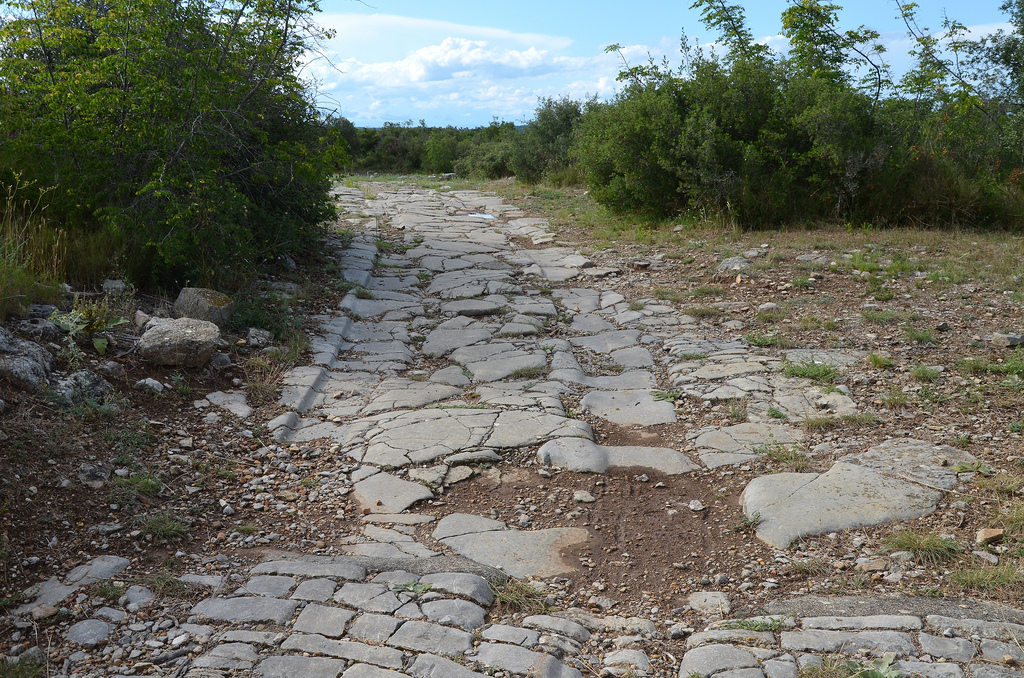Ambrussum is a beautiful Gallo-Roman archaeological site which has revealed a great collection of buildings from the Gallic and Roman periods. It is close to the modern town of Lunel, located between Nîmes and Montpellier. The site is notable for its Iron Age settlement, its Roman staging post on the Via Domitia and its celebrated bridge spanning the Vidourle River, the Pont Ambroix.

Coordinates: 43° 43′ 12″ N, 4° 9′ 0″ E

At the end of the fourth century BC a Gaulish tribe, the Volscians, settled and built a city surrounded by strong ramparts and towers (some of which can still be seen). The Romans conquered the area in 120 BC and the city grew rapidly. Thereafter, a new district was created next to the Vidourle River serving as a staging post for travelers (mansio). The Via Domitia, the oldest road built in France running from Alps to the Pyrenees, ran at the foot of the settlement. A paved road leading out of the settlement is visible along with the traces of Roman chariot tracks.
The Ambroix Bridge is unquestionably the most spectacular ruin of this ancient site. It is an impressive work of engineering, which allowed the Via Domitia to cross the Vidourle River. It is thought to have had 11 arches and to have been over 175 m (574 ft) in length. Unfortunately, the ravages of time and the numerous floods took out all but one arch. Two had stood as recently as 81 years ago — which are reflected in Gustave Courbet’s famous painting of the bridge — but a violent flood in 1933 left only one arch standing.
Portfolio










See more images of Ambrussum on Flickr
Links: